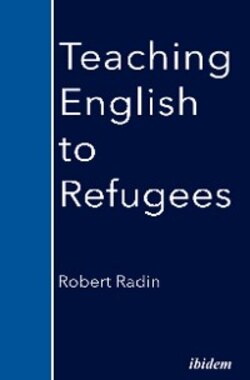Читать книгу Teaching English to Refugees - Robert Radin - Страница 6
1. The Picture Dictionary
ОглавлениеSabeen came to class early. She said she couldn’t understand English.
But I understand you, she said.
This was what she meant: Americans talked so fast. Even when she got the gist of it she couldn’t respond. In her head all she heard were the words of her first language.
I’m from California, I said. People speak slower in California.
I was exaggerating a bit. Native Californians did speak a slower, less inflected form of English, but I was trying to make a broader point about regional differences the world over. I reminded her that people in southern Iraq didn’t speak the same as people in the north, but my efforts were in vain: Now she wanted to move to California.
When everyone arrived I gave them a copy of a page from the picture dictionary. It was a drawing of three cooks in a restaurant kitchen. One was peeling potatoes, another was rolling out a pie crust, and another was opening a can.
The cooks were surrounded by utensils. Each utensil had a number that corresponded to a list of words at the bottom of the page. If Sabeen wanted to know the word for what she used to drain pasta she looked for the number next to that item and found the word on the list. Then she said the word to herself. Colander.
The picture dictionary was based on a common assumption: To learn a language was to learn the names native speakers gave to different things. It could be something concrete, like colander, or abstract, like hunger.
It was an old idea. Plato articulated a version of it in the Cratylus:
The name, like the picture, is an imitation.
The picture dictionary wasn’t just positing a theory of language acquisition—it was positing a theory of meaning. A word meant what it referred to. If I didn’t have a colander in front of me, I could close my eyes and see the image of one in my head.
I turned on the document camera and projected the page on the board. I pointed to the colander and asked them what it was and they said the word colander. Then they took out their phones and translated the word into their languages:
مصفاة
တစ်ဦ
kichujio
shaandho
फिल्टर
They were looking for identities, equivalencies. The picture dictionary encouraged this because it too was a tool for translation: It translated an actual colander into a picture of a colander, and then a picture of a colander into the word colander. The whole process was visual: They trusted what they could see with their own two eyes.
We played a game. I put the following utensils in a big cardboard box:
A grater
A pan
A pot
A ladle
A knife
A colander
A spatula
A mixing bowl
A wooden spoon
A cutting board
A whisk
A vegetable peeler
I took a utensil out of the box and showed it to them. They told me the word for it and I wrote the word on the left side of the board. I did this until I’d made a list of all the utensils. Then I showed them the utensils in a different order and they told me the words again and I made a new list on the right side of the board.
I had them read each list out loud, then I took all the utensils and put them back in the box and divided them into two teams. One person from each team came to the board, took an eraser, and stood in front of a list. I took a utensil out of the box and showed it to them. Their teammates yelled the word to them and they looked for the word and erased it. The first person to erase the word got a point for their team.
The game might help them remember the word colander, but it might not. They might go home that night and open the kitchen cabinet and see the steel bowl with the holes and the handles and not remember what it was called and blame themselves, telling themselves it was because they were adults, that it was easier for children.
The excitement they’d felt when they first arrived—that sense of safety and infinite possibility—would start to give way to resignation.
